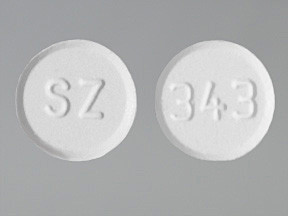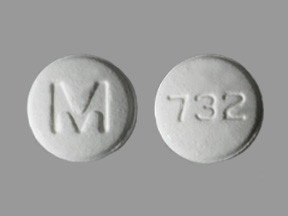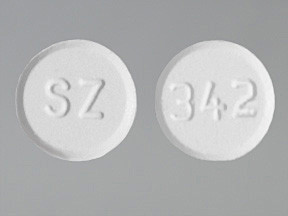ONDANSETRON DISINTEGRATING TABLET - ORAL
PHONETIC PRONUNCIATION: (on-DANCE-eh-tron)
COMMON BRAND NAME(S): Zofran ODT
GENERIC NAME(S): ondansetron
Uses
USES: This medication is used alone or with other medications to prevent nausea and vomiting caused by cancer drug treatment (chemotherapy) and radiation therapy. It is also used to prevent and treat nausea and vomiting after surgery. Ondansetron works by blocking one of the body's natural substances (serotonin) that causes vomiting.
How to use ONDANSETRON DISINTEGRATING TABLET - ORAL
HOW TO USE: This medication is dissolved on top of the tongue. It is not meant to be chewed or swallowed like other tablet forms. Dry your hands before using this medication. This medication may come in a bottle or a blister pack. If using the blister pack, peel back the foil on the blister pack to remove a tablet. Do not push the tablet through the foil. Immediately after removing the tablet, place it on the tongue. Allow it to dissolve completely, then swallow it with saliva. You do not need to take this product with water. Doing so may increase your chance of getting a headache. To prevent nausea from chemotherapy, take this medication usually within 30 minutes before treatment begins. To prevent nausea from radiation treatment, take this medication 1 to 2 hours before the start of your treatment. To prevent nausea after surgery, take ondansetron 1 hour before the start of surgery. This medication may be taken with or without food. However, your doctor may tell you not to eat before chemotherapy, radiation, or surgery. Take any other doses as directed by your doctor. Ondansetron may be taken up to 3 times a day for 1 to 2 days after your chemotherapy or radiation treatment is finished. If you are taking this medication on a prescribed schedule, take it regularly in order to get the most benefit from it. To help you remember, take it at the same times each day. Dosage is based on your medical condition and response to therapy. The dosage for children may also be based on age and weight. In patients with severe liver problems, the usual maximum dose is 8 milligrams in 24 hours. Take this medication exactly as directed. Do not take more medication or take it more often than prescribed. Ask your doctor or pharmacist if you have questions. Inform your doctor if your condition does not improve or if it worsens.
Side Effects
Precautions
Interactions
Overdose
Images
Reviews
Faq for ONDANSETRON DISINTEGRATING TABLET - ORAL
Ondansetron Disintegrating Tablet is used to prevent nausea and vomiting caused by certain medical treatments such as chemotherapy or radiation.
Place the tablet on your tongue, allow it to dissolve, and then swallow it with or without water. It can be taken with or without food, usually 30 minutes before starting chemotherapy or radiation.
Common side effects include headache, drowsiness, constipation, and diarrhea. Serious side effects such as allergic reactions or changes in heart rhythm are rare but possible. Contact your doctor immediately if you experience any severe side effects.
It is generally considered safe to use Ondansetron Disintegrating Tablet during pregnancy, but you should consult your doctor before taking it. They will determine the risks and benefits based on your individual situation.
Yes, Ondansetron Disintegrating Tablet can be given to children, but the dosage may vary depending on their age and weight. Follow the instructions provided by your doctor or healthcare provider.
Ondansetron Disintegrating Tablet may cause drowsiness, so it is advisable to avoid driving or operating machinery until you know how it affects you. If you feel excessively drowsy, consult your doctor.
Ondansetron Disintegrating Tablet may interact with certain medications, including antidepressants, anti-anxiety drugs, and pain medications. Inform your doctor about all the medications you are taking to avoid potential interactions.
If you miss a dose, take it as soon as you remember. However, if it is close to the time for your next dose, skip the missed dose and continue with your regular dosing schedule. Do not take a double dose to make up for a missed one.
Store Ondansetron Disintegrating Tablet at room temperature, away from light and moisture. Keep it out of reach of children and pets.
Disclaimer
IMPORTANT: HOW TO USE THIS INFORMATION: This is a summary and does NOT have all possible information about this product. This information does not assure that this product is safe, effective, or appropriate for you. This information is not individual medical advice and does not substitute for the advice of your health care professional. Always ask your health care professional for complete information about this product and your specific health needs.



No Reviews Yet